Action observation for upper limb rehabilitation after stroke
- PMID: 35930301
- PMCID: PMC9354942
- DOI: 10.1002/14651858.CD011887.pub3
Action observation for upper limb rehabilitation after stroke
Abstract
Background: Action observation (AO) is a physical rehabilitation approach that facilitates the occurrence of neural plasticity through the activation of the mirror-neural system, promoting motor recovery in people with stroke.
Objectives: To assess whether AO enhances upper limb motor function in people with stroke.
Search methods: We searched the Cochrane Stroke Group Trials Register (last searched 18 May 2021), the Cochrane Central Register of Controlled Trials (18 May 2021), MEDLINE (1946 to 18 May 2021), Embase (1974 to 18 May 2021), and five additional databases. We also searched trial registries and reference lists.
Selection criteria: Randomized controlled trials (RCTs) of AO alone or associated with physical practice in adults after stroke. The primary outcome was upper limb (arm and hand) motor function. Secondary outcomes included dependence on activities of daily living (ADL), motor performance, cortical activation, quality of life, and adverse effects.
Data collection and analysis: Two review authors independently selected trials according to the predefined inclusion criteria, extracted data, assessed risk of bias using RoB 1, and applied the GRADE approach to assess the certainty of the evidence. The reviews authors contacted trial authors for clarification and missing information.
Main results: We included 16 trials involving 574 individuals. Most trials provided AO followed by the practice of motor actions. Training varied between 1 day and 8 weeks of therapy, 10 to 90 minutes per session. The time of AO ranged from 1 minute to 10 minutes for each motor action, task or movement observed. The total number of motor actions ranged from 1 to 3. Control comparisons included sham observation, physical therapy, and functional activity practice.
Primary outcomes: AO improved arm function (standardized mean difference (SMD) 0.39, 95% confidence interval (CI) 0.17 to 0.61; 11 trials, 373 participants; low-certainty evidence); and improved hand function (mean difference (MD) 2.76, 95% CI 1.04 to 4.49; 5 trials, 178 participants; low-certainty evidence).
Secondary outcomes: AO did not improve ADL performance (SMD 0.37, 95% CI -0.34 to 1.08; 7 trials, 302 participants; very low-certainty evidence), or quality of life (MD 5.52, 95% CI -30.74 to 41.78; 2 trials, 30 participants; very low-certainty evidence). We were unable to pool the other secondary outcomes (motor performance and cortical activation). Only two trials reported adverse events without significant adverse effects.
Authors' conclusions: The effects of AO are small for arm function compared to any control group; for hand function the effects are large, but not clinically significant. For both, the certainty of evidence is low. There is no evidence of benefit or detriment from AO on ADL and quality of life of people with stroke; however, the certainty of evidence is very low. As such, our confidence in the effect estimate is limited because it will likely change with future research.
Trial registration: ClinicalTrials.gov NCT02235350 NCT04015271 NCT04047134 NCT04574687 NCT04943601.
Copyright © 2022 The Cochrane Collaboration. Published by John Wiley & Sons, Ltd.
Conflict of interest statement
Lorenna RDM Borges: none known Aline Fernandes: none known Jacilda Passos: none known Isabelle Rego: none known Tania F Campos: none known
Figures


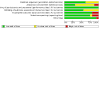

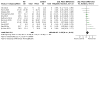
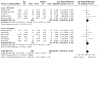
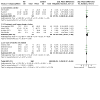


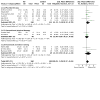
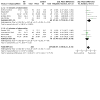
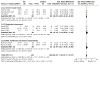
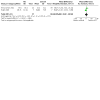
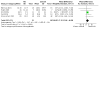

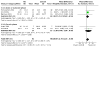

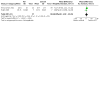
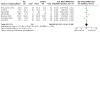
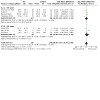

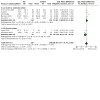


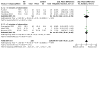
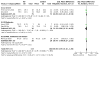

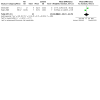
Update of
-
Action observation for upper limb rehabilitation after stroke.Cochrane Database Syst Rev. 2018 Oct 31;10(10):CD011887. doi: 10.1002/14651858.CD011887.pub2. Cochrane Database Syst Rev. 2018. Update in: Cochrane Database Syst Rev. 2022 Aug 5;8:CD011887. doi: 10.1002/14651858.CD011887.pub3. PMID: 30380586 Free PMC article. Updated. Review.
References
References to studies included in this review
Celnik 2008 {published and unpublished data}
Cowles 2013 {published and unpublished data}
-
- Cowles T, Clark A, Mares K, Peryer G, Stuck R, Pomeroy V. Observation-to-imitate plus practice could add little to physical therapy benefits within 31 days of stroke: translational randomized controlled trial. Neurorehabilitation and Neural Repair 2013;27(2):173-82. [DOI: 10.1177/1545968312452470] - DOI - PubMed
Dettmers 2014 {published and unpublished data}
-
- Dettmers C, Nedelko V, Hassa T, Starrost K, Schoenfeld MA. Video therapy: promoting hand function after stroke by action observation training – a pilot randomized controlled rial. International Journal of Physical Medicine and Rehabilitation 2014;2(189):2. [2329-9096]
Ertelt 2007 {published and unpublished data}
-
- Ertelt D, Hemmelmann C, Dettmers C, Ziegler A, Binkofski F. Observation and execution of upper-limb movements as a tool for rehabilitation of motor deficits in paretic stroke patients: protocol of a randomized clinical trial. BMC Neurology 2012;12(1):42. [DOI: 10.1186/1471-2377-12-42] - DOI - PMC - PubMed
Franceschini 2012 {published and unpublished data}
-
- Franceschini M, Ceravolo MG, Agosti M, Cavallini P, Bonassi S, Dall’Armi V, et al. Clinical relevance of action observation in upper-limb stroke rehabilitation a possible role in recovery of functional dexterity. A randomized clinical trial. Neurorehabilitation and Neural Repair 2012;26(5):456-62. [DOI: 10.1177/1545968311427406] - DOI - PubMed
Fu 2017 {published data only}
Harmsen 2015 {published and unpublished data}
Hsieh 2020 {published data only}
Jin‐Woo 2011 {published data only}
-
- Jin-Woo J, Soon BY, Lee MK. The effect of action observation training on upper extremity function in chronic stroke patients. Journal of Korean Society of Occupational Therapy 2011;19:15–24.
Kim 2015 {published data only}
Kim 2016a {published data only}
-
- Kim C, Bang D. Action observation training enhances upper extremity function in subacute stroke survivor with moderate impairment: a double-blind, randomized controlled pilot trial. Journal of the Korean Society of Physical Medicine 2016;11(1):133-40. [10.13066/kspm.2016.11.1.133]
Kuk 2016 {published data only}
Lee 2013 {published and unpublished data}
Mancuso 2021 {published and unpublished data}
Younghwa 2013 {published data only}
-
- Younghwa G, Bora K. An impact of action-observation training and task-oriented training on activities of daily living of stroke patients. Journal of Korean Integrative Medicine 2013;1(3):19-28.
Zhu 2015 {published and unpublished data}
-
- Zhu MH, Wang J, Gu XD, Shi MF, Zeng M, Wang CY, et al. Effect of action observation therapy on daily activities and motor recovery in stroke patients. International Journal of Nursing Sciences 2015;2(3):279-82. [DOI: 10.1016/j.ijnss.2015.08.006] - DOI
References to studies excluded from this review
Brunner 2014 {published data only}
Cha 2015 {published data only}
-
- Cha Y, Yoo E, Jung M, Park S, Park J, Lee J. Effects of mental practice with action observation training on occupational performance after stroke. Journal of Stroke and Cerebrovascular Diseases 2015;24(6):1405-13. - PubMed
Chang 2017 {published data only}
Emmerson 2017 {published data only}
-
- Emmerson K, Harding K, Taylor N. Home exercise programmes supported by video and automated reminders compared with standard paper-based home exercise programmes in patients with stroke: a randomized controlled trial. Clinical Rehabilitation 2017;31(8):1068-77. - PubMed
Ertelt 2012 {published data only}
-
- Ertelt D, Hemmelmann C, Dettmers C, Ziegler A, Binkofsk F. Observation and execution of upper-limb movements as a tool for rehabilitation of motor deficits in paretic stroke patients: protocol of a randomized clinical trial. BMC Neurology 2012;12(1):42. [DOI: 10.1186/1471-2377-12-42] - DOI - PMC - PubMed
Franceschini 2010a {published data only}
-
- Franceschini M, Agosti M, Cantagallo A, Sale P, Mancuso M, Buccino G. Mirror neurons: action observation treatment as a tool in stroke rehabilitation. European Journal of Physical and Rehabilitation Medicine 2010;46(4):517-23. [MEDLINE: ] - PubMed
Frenkel‐Toledo 2014 {published data only}
-
- Frenkel-Toledo S, Bentin S, Perry A, Liebermann D, Soroker N. Mirror-neuron system recruitment by action observation: effects of focal brain damage on mu suppression. NeuroImage 2014;87:127-37. - PubMed
Kim 2010 {published data only}
-
- Kim J, Yang B, Lee M. The effect of action observational physical training on manual dexterity in stroke patients. Physical Therapy Korea 2010;17(2):17-24.
Kim 2013a {published data only}
Kim 2013b {published data only}
Kim 2014 {published data only}
Kim 2016b {published data only}
-
- Kim T, Kim S, Lee B. Effects of action observational training plus brain-computer interface-based functional electrical stimulation on paretic arm motor recovery in patient with stroke: a randomized controlled trial. Occupational Therapy International 2016;23(1):39-47. [DOI: 10.1002/oti.1403] - DOI - PubMed
Ko 2014 {published data only}
-
- Ko H-E, Park J-J, Lee K-J, Lee E-H, Oh M-H. The effect of action-observational physical training based on mirror neuron system on upper extremity function and activities of daily living in stroke patient. Journal of the Korea Institute of Electronic Communication Sciences 2013;9(1):123-30.
Lee 2016 {published data only}
-
- Lee H, Kim H, Kwon H, Cho Y, Lee S. Effects of the distant action observation training program on function restorations of chronic stroke patients. Journal of Korean Society of Occupational Therapy 2016;24(1):1-13. [DOI: 10.14519/jksot.2016.24.1.01] - DOI
Liepert 2014 {published data only}
Lima 2020 {published data only}
-
- Lima AC, Christofoletti G. Exercises with action observation contribute to upper limb recovery in chronic stroke patients: a controlled clinical trial. Motriz 2020;26(1):e10200148.
Lubart 2017 {published data only}
-
- Lubart A, Leibovitz A, Peleg L, Yarovoy A, Gal G, Mizrahi E, et al. Action observation of motor skills followed by immediate sleep enhances the motor rehabilitation of older adults with stroke. Journal of Geriatric Physical Therapy 2017 Jun 21 [Epub ahead of print]. [2152-0895] - PubMed
Marangon 2014 {published data only}
Sale 2012 {published data only}
-
- Sale P, Franceschini M. Action observation and mirror neuron network: a tool for motor stroke rehabilitation. European Journal of Physical and Rehabilitation Medicine 2012;48(2):313-8. [PMID: ] - PubMed
Shih 2017 {published data only}
-
- Shih TY, Wu CY, Lin KC, Cheng CH, Hsieh YW, Chen CL, et al. Effects of action observation therapy and mirror therapy after stroke on rehabilitation outcomes and neural mechanisms by MEG: study protocol for a randomized controlled trial. Trials 2017;18((1 CC-Stroke)):459. [DOI: 10.1186/s13063-017-2205-z] - DOI - PMC - PubMed
Sugg 2015 {published data only}
Sun 2016 {published data only}
-
- Sun Y, Wei W, Luo Z, Gan H, Hu X. Improving motor imagery practice with synchronous action observation in stroke patients. Topics in Stroke Rehabilitation 2016;23(4):245-53. - PubMed
Szameitat 2012 {published data only}
-
- Szameitat A, Shen S, Conforto A, Sterr A. Cortical activation during executed, imagined, observed, and passive wrist movements in healthy volunteers and stroke patients. NeuroImage 2012;62(1):266-80. - PubMed
Wright 2014 {published data only}
Yun 2011 {published data only}
-
- Yun TW, Lee MK. The change of mu rhythm during action observation in people with stroke. Journal of the Korean Society of Physical Medicine 2011;6(3):361-8.
References to ongoing studies
NCT02235350 {published data only}
-
- NCT02235350. Study on the effectiveness of action observation treatment (AOT) as a rehabilitation tool in acute stroke patients and in chronic stroke patients with apraxia: a randomized controlled trial. clinicaltrials.gov/ct2/show/study/NCT02235350 (first received 9 September 2014). [NCT02235350]
NCT04015271 {published data only}
-
- NCT04015271. Feasibility of action observation and repetitive task practice on upper extremity outcomes in chronic stroke survivors. clinicaltrials.gov/show/NCT04015271 (first received 10 July 2019).
NCT04047134 {published data only}
-
- NCT04047134. Neuroimaging biomarkers toward a personalized upper limb action observation treatment in chronic stroke patients. clinicaltrials.gov/show/NCT04047134 (first received 6 August 2019).
NCT04574687 {published data only}
-
- NCT04574687. Effects of action observation therapy on fine motor skills of upper limb functions in chronic stroke patients. clinicaltrials.gov/show/NCT04574687 (first received 5 October 2020).
NCT04943601 {published data only}
-
- NCT04943601. Action observation therapy for stroke [Effect of action observation exercises with complex tasks on upper limb function in acute stroke]. clinicaltrials.gov/show/NCT04943601 (first received 29 June 2021). [REC/00816]
Additional references
Bassolino 2015
Bazzini 2022
Buccino 2014
Chen 2009
-
- Chen HM, Chen CC, Hsueh IP, Huang SL, Hsieh CL. Test-retest reproducibility and smallest real difference of 5 hand function tests in patients with stroke. Neurorehabilitation and Neural Repair 2009;23(5):435-40. - PubMed
Cowles 2012
-
- Cowles T, Clark A, Mares K, Peryer G, Stuck R, Pomeroy V. Observation-to-imitate plus practice could add little to physical therapy benefits within 31 days of stroke: translational randomized controlled trial. Neurorehabilitation and Neural Repair 2012;27(2):173-82. - PubMed
Feigin 2014
Fitts 1967
-
- Fitts PM, Posner MI. Human Performance. Belmont: Brooks/Colemann, 1967.
Garrison 2010
Garrison 2013
GBD 2017
Ge 2018
GRADEpro GDT [Computer program]
-
- GRADEpro GDT. Hamilton (ON): McMaster University (developed by Evidence Prime), (accessed prior to 15 June 2022). Available at gradepro.org.
Gregor 2021
Hardwick 2018
Harvey 2009
-
- Harvey RL. Improving poststroke recovery: neuroplasticity and task-oriented training. Current Treatment Options in Cardiovascular Medicine 2009;11(3):251-9. - PubMed
Higgins 2017
-
- Higgins JP, Altman DG, Sterne JA, (editors). Chapter 8: Assessing risk of bias in included studies. In: Higgins JP, Churchill R, Chandler J, Cumpston MS editor(s). Cochrane Handbook for Systematic Reviews of Interventions Version 5.2.0 (updated June 2017). Cochrane, 2017. Available from www.training.cochrane.org/handbook/archive/v5.2.
Higgins 2022
-
- Higgins JP, Thomas J, Chandler J, Cumpston M, Li T, Page MJ, Welch VA, editor(s). Cochrane Handbook for Systematic Reviews of Interventions Version 6.3 (updated February 2022). Cochrane, 2022. Available from www.training.cochrane.org/handbook.
Huntley 2018
Johansson 2011
-
- Johansson BB. Current trends in stroke rehabilitation. A review with focus on brain plasticity. Acta Neurologica Scandinavica 2011;123(3):147-59. - PubMed
Katan 2018
Kemmerer 2021
-
- Kemmerer D. What modulates the Mirror Neuron System during action observation? Multiple factors involving the action, the actor, the observer, the relationship between actor and observer, and the context. Progress in Neurobiology 2021;205:102-28. [DOI: 10.1016/j.pneurobio.2021.102128] - DOI - PubMed
Kim 2018
Krakauer 2019
Langhorne 2011
Lieshout 2020
-
- Lieshout EC, de Port IG, Dijkhuizen RM, Visser-Meily JM. Does upper limb strength play a prominent role in health-related quality of life in stroke patients discharged from inpatient rehabilitation? Topics in Stroke Rehabilitation 2020;27(7):525-33. [DOI: 10.1080/10749357.2020.1738662] - DOI - PubMed
Lundquist 2021
Magill 1989
-
- Magill RA. Motor Learning: Concepts and Applications. 3rd edition. Dubuque: Wm C Brown, 1989.
Millar 2021
-
- Millar JD, Van Wijck F, Pollock A, Ali M. International consensus recommendations for outcome measurement in post-stroke arm rehabilitation trials. European Journal of Physical and Rehabilitation Medicine 2021;57(1):61-8. - PubMed
Page 2021
Peng 2019
Pollock 2014
Rand 2015
Review Manager 2020 [Computer program]
-
- Review Manager 5 (RevMan 5). Version 5.4. Copenhagen: Nordic Cochrane Centre, The Cochrane Collaboration, 2020.
Ryan 2016
-
- Ryan R, Synnot A, Prictor M, Hill S. Cochrane Consumers and Communication Group Data Extraction Template for Included Studies. cccrg.cochrane.org/author-resources. [DOI: 10.26181/5b57cfd711743] - DOI
Ryan 2021
-
- Ryan D, Fullen B, Rio E, Segurado R, Stokes D, O’Sullivan C. Effect of action observation therapy in the rehabilitation of neurologic and musculoskeletal conditions: a systematic review. Archives of Rehabilitation Research and Clinical Translation 2021;3:1-33. [DOI: 10.1016/j.arrct.2021.100106] - DOI - PMC - PubMed
Sarasso 2015
Schulz 2010
Small 2012
-
- Small SL, Buccino G, Solodkin A. The mirror neuron system and treatment of stroke. Developmental Psychobiology 2012;54(3):293-310. - PubMed
Tani 2018
-
- Tani M, Ono Y, Matsubara M, Ohmatsu S, Yukawa Y, Kohno M, Tominaga T. Action observation facilitates motor cortical activity in patients with stroke and hemiplegia. Neurosci Res 2018;133:7-14. - PubMed
Timmermans 2010
-
- Timmermans AA, Spooren AI, Kingma H, Seelen HA. Influence of task-oriented training content on skilled arm-hand performance in stroke: a systematic review. Neurorehabilitation and Neural Repair 2010;24(9):858-70. - PubMed
Zhang 2019
References to other published versions of this review
Borges 2015
Publication types
MeSH terms
Associated data
LinkOut - more resources
Full Text Sources
Medical
Research Materials

